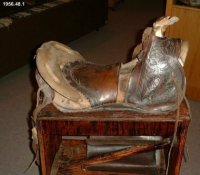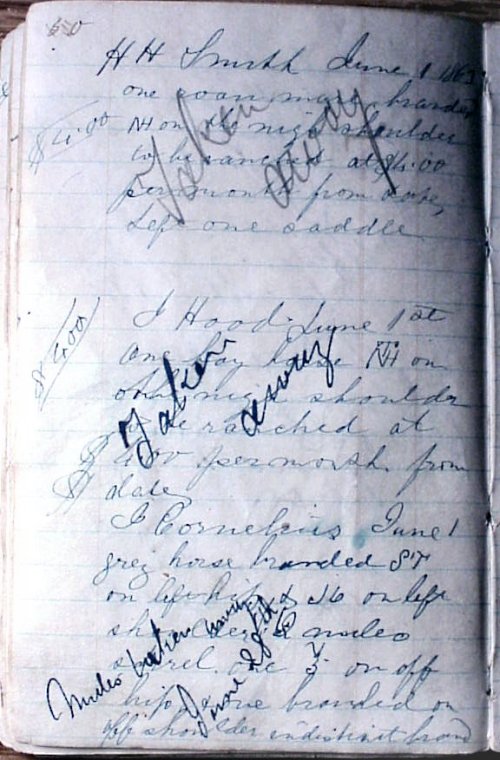


IntroductionThese journals are part of the John Boyd records held at both the U.B.C. Special Collections library and the Quesnel Museum & Archives collection. Though titled "Wade & Co" the records have remained in the John Boyd collection because Mr. Boyd purchased the WCM (Wade, Cox & Morland) ranch with Charles Heath and operated it for over 50 years with his family continuing it for another 40. The part of the journal currently available covers the spring traffic in 1863, the height of the Barkerville gold rush. The ranch records are solely concerned with keeping track of the animals that the various prospectors and packers brought with them. The term "ranched" is used here (and was used by Boyd in the same way for the rest of his life) in the same way we would use "boarding horses". In other words it was an agreement that for $4.00 per month (the standard rate for most of this record) the WCM ranch would provide the horse with pasture and water. The reason that this was so important a business is that the WCM ranch was the closest arable land to the Lighnting and Williams Creek goldfields. It was not practical to take your horse into Barkerville and put it up at a stable for the summer while you worked on your claim. First it would cost a large amount of money since there was virtually no pasture in the immmediate area and second no one was providing that kind of service. It appears that many of the miners, therefore left their animals at the WCM ranch and picked them up later on their way out before winter set in. The "animals" field (see the explanation on fields and records in the Learner's Corner) records the details on all of the animals left by a customer which could be from one to many (most often 1 or 2 animals). The "tracking" field should be explained a bit. A standard page (see the image below) would contain the agreement for 2 or 3 customers. What makes the records hard to interpret is that when the horse was retrieved by the owner the recorder would typically write "Taken away" over top of the original information and perhaps the date. Sometimes owners would sign over top of the date to indicate their agreement. So the tracking field contains those other pieces of information like the $4.00 that shows up to the left or the check mark that was often made (noted as "(checked)" in the field) over top of the original information. The note field is used to provide a space for any other information that might have been written on the side to go along with the agreement. June 1, 1863 (page 50)
|